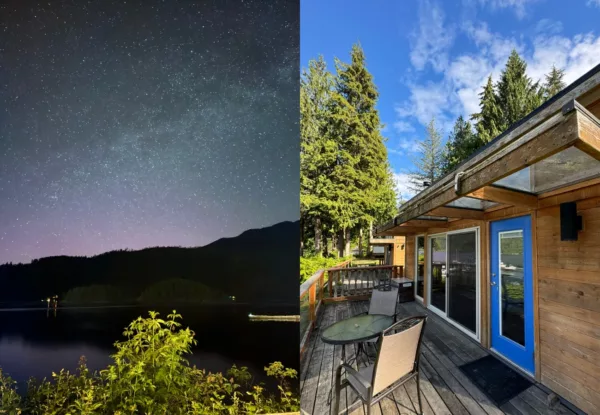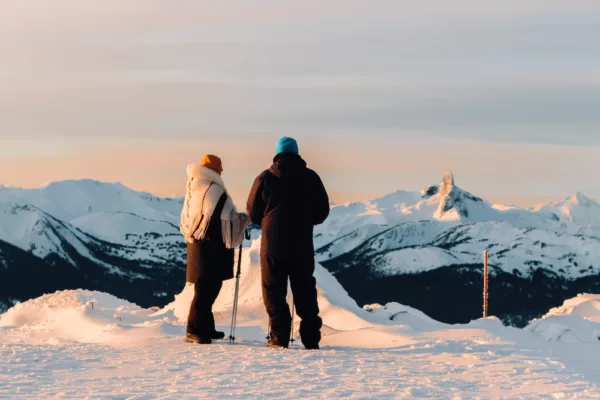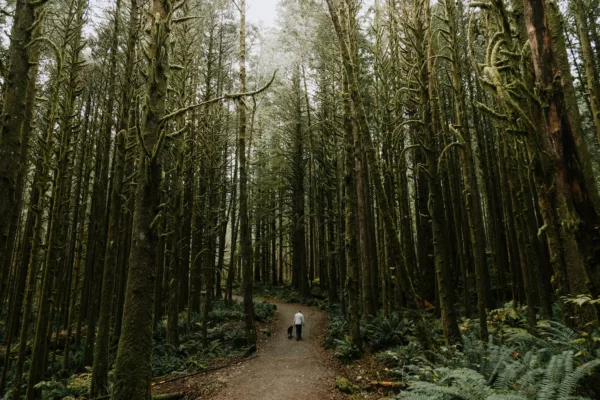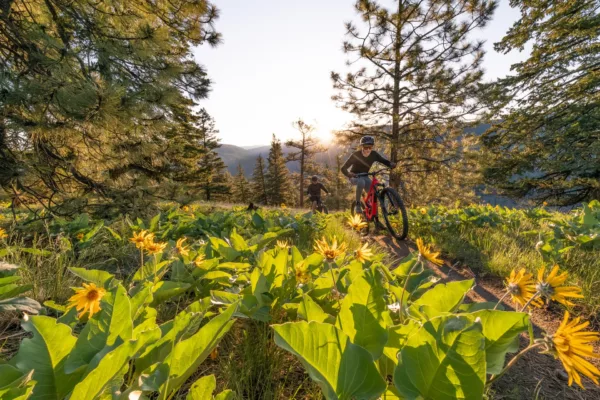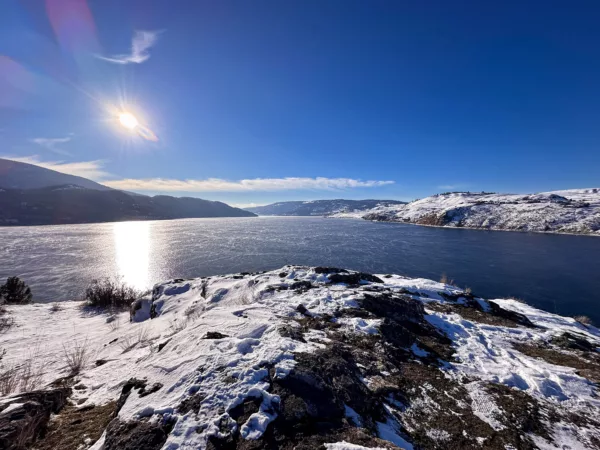Gadd’s Truth: Liquid Courage

As a family, we’ve gone rock climbing, paragliding, backpacking, backcountry skiing, canyoneering and even to a riot in Greece. All were character-forming, in my view (some less so in theirs), and excellent adventures. But so far we’ve avoided the ocean. To a mountain family, the ocean embodies many of the things we dislike or fear: it’s wet, cold and flat—and when not flat it crashes onto the shore in the equivalent of minor avalanches, constantly.
Still, we are an adventure family. My partner, Sarah, and I had heard about the coastal hikes on Vancouver Island, British Columbia—they seemed in my mind like ideal challenges for us, plus a tween (10), a teen (14) and a 17-pound Mexican street dog named Freya. The famous West Coast Trail was closed for Covid-19 (and to dogs), so our Plan Z was the Nootka Trail, which runs along the northwest coast of Vancouver Island for about 40 rough kilometres and is not recommended for dogs or children under 12. Still, it had to be safer than that riot (we did leave when the tear gas got close), so off we went.
The easiest way to reach Nootka Island was via de Havilland Beaver. This wasn’t like a commercial jet; this was real aviation. We flew through little squalls, clouds and into an uncertain future, but if we’d done just that plane ride it would have been among the best family moments ever. As a dad, that’s what I live for.
As the pilot banked into a lagoon and taxied toward shore, a small group of hikers burst out of the forest—or the “Jungle” as the kids called it—and waded toward the plane like it was the last flight out of Antarctica before winter. They’d seen wolves, bears, sharks, live and dead whales, been rained on constantly, run out of food and despite all of this seemed remarkably cheerful. The kids eyed their cut-laced legs with concern and kept their backpacks full of food close. Then the roaring plane and people were gone and we entered the rainforest.
In the Rockies, the colour palette is black, white and the odd green bit. On Vancouver Island, the palette is made of infinite shades of green. Our family walked in respectful silence at first, a rare event for a 10-and 14-year-old, then with laughter, clambering up and over slick rocks, down into the mud and under trees larger than any we’d ever seen. Then we burst out of the forest and onto a rainy beach and, again, were struck silent. Looking at the ocean, the 10-year-old simply said, “It’s really, really big.” The 14-year-old, for once, said nothing smart. And then 10 noticed the small crabs in the water, and soon her and 14 were investigating together with a cooperative level not often seen in our family.
The first few kilometres were packed with things we’d never experienced: kelp to sand dollars, all requiring time to touch, smell (especially Freya) or discuss. Our first campsite involved dragging logs around, putting up tents and a tarp (this is important to bring in the mountains—but it’s an absolute essential on the coast) and then messing about around the ocean. I slept fitfully in our new four-person-tent for the first nine minutes, concerns about tsunamis racing through my mind, then solidly for another nine hours. (The rest of the family heard every wave, apparently, but it’s important for a dad to be well rested.)
The next few days went by in an ever-engaging ride of sand, rocks, logs, deep forest, sun, a dead whale that Freya found, a few fellow hikers, camp food and ocean, always ocean. The kids, normally a little slow to help, soon knew what needed doing, and did it, from clearing tent platforms to finding fresh water. I’d brought a tide table as some parts of the hike required timing the tides to traverse. I took great pride in using maritime phrasing like, “A flood tide after 0800 will make this next section impassable, we’ll have to start early.”
On our last day, 11 required no help—“Not even once!”—with her pack, and we were crushing the beach and forest sections with authority. The ocean had become a source of wonder instead of an enemy, and we’d gelled as a family. This team consolidation is the same experience I go through with partners on expeditions, but on this trip we found an even stronger version of it as a family, and that is the rarest and best form of family time I know.
But we had a final challenge from the ocean: the Tsa’tsil Lagoon crossing, which you want to do at low tide. But, now as a seasoned mariner, I guessed this wasn’t too important. I was wrong. The water was already rushing inland at least waist-deep (on an adult) and rising fast. I started looking around for options: This clearly wasn’t going to work with a dog and kids.
“Dad! What about down here a little more?” Surprisingly, 14 was in her underwear and determined to solve the crossing problem. Soon she was bouncing in the current neck-deep, then out on the other side, shivering in the sporadic rain, then back in to get her pack and help us cross. When another group showed up behind us, 14 excitedly told them how to do it, and helped them cross. I tried not to burst with pride. She’d faced a challenge and literally risen above it, helping not only the family but others too.
We have found a love for Canada’s coastal hikes and are pondering options from Newfoundland’s East Coast Trail to more on Vancouver Island. We may, despite my whitewater kayaker’s hatred of flat water, even do an ocean kayaking trip. And for all of us, the ocean is no longer a place of fear, but of immense beauty, where we as a family are at our best. I have done many trips and expeditions but never had a better one than the Nootka Trail—with my family.
This article originally appeared in the Summer 2022 issue. (“Gadd’s Truth,” page 22).
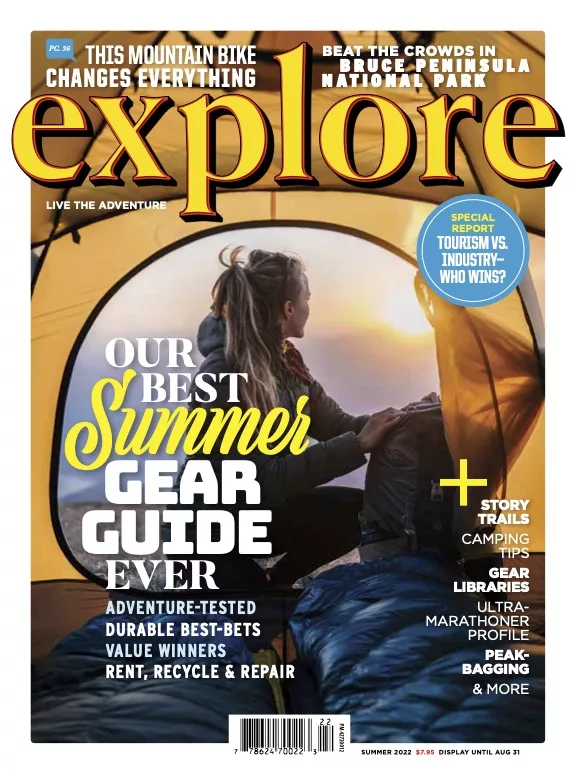
Click here to subscribe to explore magazine in print!
Read more:
To Geo-Tag, or Not Geo-Tag: What Impact Does Social Media Have On Earth’s Hidden Gems?
10 of the Best Trails Near Port Moody BC
10 Cool Uses for Your Nalgene Bottle on the Trail or in the Tent









